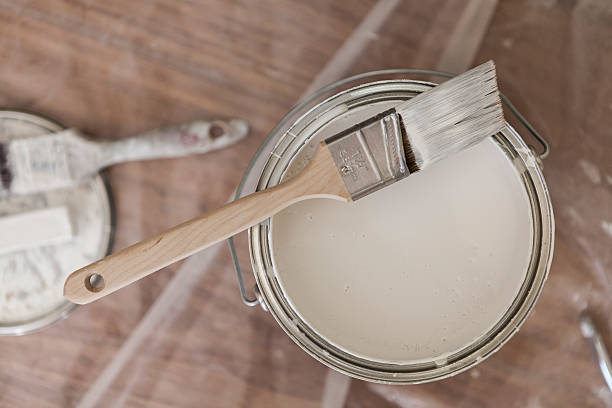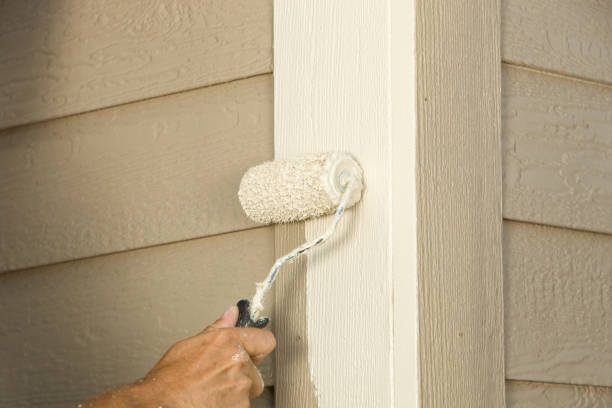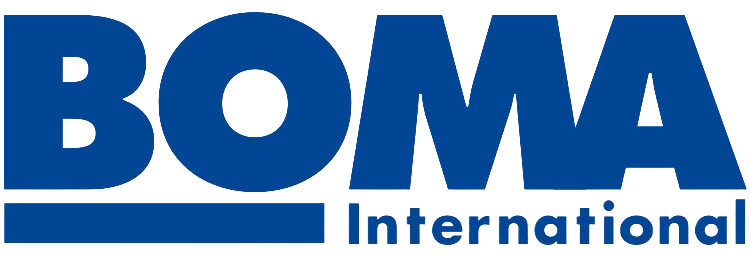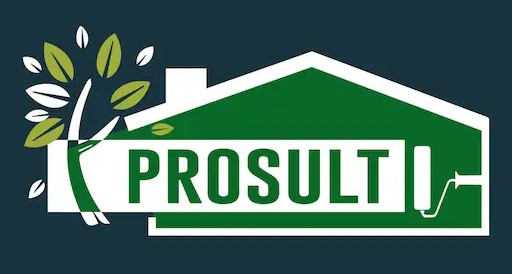You’ve been through this before. The last painting contractor started work without proper preparation, and within 18 months the paint was peeling around your windows. The time before that, they skipped the moisture testing and trapped water under the new paint, creating blistering that cost thousands to fix. Now you’re hiring another painter, and you’re determined to catch problems before they start. Learning how to spot poor painting preparation has become critical because you can’t afford another failed paint job.
The mistakes before exterior painting aren’t always obvious to homeowners, but they’re predictable patterns that separate quality contractors from those who create problems. These pre-painting errors determine whether your investment lasts 10-12 years or fails within 2-3 years, requiring expensive emergency repairs.
Key Takeaways
- Skipping moisture testing guarantees paint failure within 18 months on damp substrates
- Inadequate surface inspection misses rot, damage, and adhesion problems
- Weather condition ignorance leads to application failures and warranty voids
- Wrong product selection wastes money and guarantees premature failure
- Unrealistic timelines create rushed work and quality shortcuts
- Poor safety planning puts workers and property at risk
- Communication breakdowns cause mismatched expectations and disputes
Mistake #1: Skipping Moisture Content Testing
The most damaging of all mistakes before exterior painting is failing to test substrate moisture levels before application. Paint applied over damp surfaces creates trapped moisture that causes blistering, peeling, and adhesion failure—usually within 12-18 months.
Industry Moisture Standards:
- Wood siding: Below 15% moisture content
- Stucco: Below 15% moisture content
- Concrete: Below 12% moisture content
- Fiber cement: Below 12% moisture content
Professional painters use moisture meters to verify substrate dryness before any coating application. They test multiple locations, particularly problem areas like north-facing walls, near downspouts, and ground-level surfaces.
Red Flags to Watch For:
- Contractor begins work immediately after rain
- No moisture meter visible on job site
- Starting work without discussing recent weather
- Claims “it looks dry enough”
A homeowner’s contractor painted three days after heavy rain without moisture testing. The north wall showed 22% moisture content. Within 14 months, the entire north elevation blistered and peeled, requiring complete removal and reapplication at twice the original project cost.
What to Ask: “Will you test moisture levels before painting? Can I see the moisture readings for different areas of my house?”
Mistake #2: Inadequate Surface Condition Assessment
Comprehensive surface inspection represents another critical category of mistakes before exterior painting that experienced homeowners should catch during the estimate phase.
What Proper Inspection Includes:
- Complete walk-around examining all surfaces
- Documentation of existing damage or structural issues
- Assessment of previous paint condition and adhesion
- Identification of caulking failures and gaps
- Detection of mold, mildew, or biological growth
Written documentation of pre-existing conditions protects both homeowner and contractor. It establishes baseline condition, identifies needed repairs, and prevents disputes about whether damage existed before work began.
Professional painters spend 45-90 minutes conducting thorough inspections, taking photographs, and creating written assessments. They identify problems, explain repair requirements, and provide itemized estimates.
Damage Types Often Missed:
- Wood rot behind intact paint surfaces
- Failed caulking allowing water infiltration
- Cracked substrate requiring repair
- Previous paint applied over contamination
In Snellville’s humid climate, moisture-related damage hides under seemingly sound paint. Thorough inspection reveals problems that cause failures if painted over without repair.
Questions to Ask: “Can you provide written documentation of existing damage? Will you photograph problem areas? What repairs do you recommend before painting?”
Mistake #3: Ignoring Weather Forecasts and Conditions
Weather-related mistakes before exterior painting create failures that void warranties and require expensive repairs. Professional contractors understand that rushing to maintain schedules in poor conditions guarantees problems.
Critical Weather Parameters:
- Temperature: 50-90°F during application and curing
- Humidity: Below 85% relative humidity
- Rain Forecast: No precipitation within 24-48 hours
- Wind: Below 15 mph for spray application
Paint undergoes chemical reactions during curing that require specific environmental conditions. Violations interrupt these reactions, creating weak films that fail prematurely.
Paint applied at 48°F never properly cures. Coatings applied in 90% humidity blister within weeks. Rain within 12 hours washes away uncured paint, creating expensive waste.
What Professional Contractors Do:
- Check extended forecasts before scheduling
- Monitor conditions throughout application
- Delay work when conditions aren’t ideal
- Use infrared thermometers and hygrometers
Snellville’s high humidity, frequent afternoon thunderstorms, and summer heat create narrow application windows. Professional painters understand these patterns and schedule accordingly rather than forcing work in poor conditions.
Sometimes weather creates situations where work should stop entirely. Understanding when contractors recognize painting projects that are too risky demonstrates professional judgment over profit motivation.
Ask Your Contractor: “How do you monitor weather conditions? What happens if it rains before the paint cures? Will you delay work if conditions aren’t right?”
Mistake #4: Wrong Product Selection for Substrate

Material specification represents technical mistakes before exterior painting that homeowners often can’t evaluate without help. Wrong product choices waste money and guarantee premature failure.
Substrate-Specific Requirements:
Wood siding requires flexible coatings accommodating movement, mildew-resistant formulations, and stain-blocking primers. Products like Sherwin-Williams Duration or Benjamin Moore Aura work well.
Fiber cement requires coatings designed for alkaline surfaces with proper adhesion technology. Sherwin-Williams SuperPaint or Behr Premium Plus Ultra are appropriate choices.
Stucco and masonry require elastomeric coatings bridging cracks with moisture-resistant, breathable formulations like Sherwin-Williams Loxon or Benjamin Moore Elastomeric.
Georgia’s humid subtropical climate requires mildew-resistant formulations with enhanced moisture handling. Standard paints lacking these properties fail faster in high-humidity environments.
Common Product Mistakes:
- Using interior paint for exterior applications
- Applying paint over glossy surfaces without primer
- Choosing flat finishes that hold moisture and dirt
- Selecting cheap paints lacking performance chemistry
Professional painters match paint chemistry to substrates, exposure, and climate. They explain product selections, provide manufacturer data sheets, and justify recommendations with technical reasoning.
Questions About Materials: “What specific products will you use? Why are they appropriate for my siding type? Do they include mildew resistance?”
Mistake #5: Unrealistic Timeline Planning
Schedule-related mistakes before exterior painting create pressure that leads to quality shortcuts. Experienced homeowners recognize when timelines don’t allow proper preparation and application.
What Proper Timelines Include:
- Day 1-2: Surface preparation (washing, scraping, sanding)
- Day 3: Repairs, priming, caulking
- Day 4: Drying time, inspection
- Day 5-6: First coat application
- Day 7: Drying and inspection
- Day 8-9: Second coat application
- Day 10: Final inspection and cleanup
Each phase requires adequate time for proper execution and drying. Compressed schedules force shortcuts in preparation, inadequate drying between coats, and application in marginal conditions.
A contractor promising a 2,500 square foot house in four days can only achieve that timeline by eliminating preparation, applying single coats, and working in poor conditions. The result: failure within 18 months requiring complete redo.
Professional contractors provide realistic timelines accounting for all phases, build weather delay buffers into schedules, and refuse to compromise quality for speed.
Timeline Questions: “What’s your complete timeline including preparation and drying? How do you handle weather delays?”
Mistake #6: Inadequate Safety Planning
Safety protocol mistakes before exterior painting put workers, homeowners, and property at risk. Experienced homeowners recognize when contractors aren’t prepared for safe work execution.
Proper Safety Requirements:
- Appropriate ladder selection and stable placement
- Scaffolding for multi-story applications
- Drop cloths covering landscaping and hardscaping
- Window and door protection from overspray
- Proper PPE (respirators, gloves, eye protection)
- EPA RRP certification for pre-1978 homes
Common Safety Failures:
- Overreaching on ladders instead of repositioning
- No fall protection on multi-story work
- Inadequate property protection creating damage
- Lead paint violations creating health risks
Request certificates of insurance showing general liability and workers compensation coverage. Contractors working without insurance create liability for homeowners if injuries or property damage occur.
Safety Questions: “What safety equipment will you use? How will you protect my landscaping? Do you have EPA lead certification? Can you provide insurance certificates?”
Mistake #7: Poor Communication and Expectation Setting
Communication failures represent interpersonal mistakes before exterior painting that create disputes and disappointment even when technical work is acceptable.
What Proper Communication Includes:
- Detailed written scope of work
- Clear project timeline with milestones
- Specific product specifications
- Payment schedule tied to completion phases
- Daily work schedule and crew information
- Change order procedures
Written proposals should specify surfaces to be painted, preparation methods, primer and paint products, number of coats, exclusions, timeline, payment terms, and warranty information.
Avoid contractors requiring large upfront payments. Professional payment schedules tie deposits (typically 10-25%) to project start, with subsequent payments at completion milestones.
Red Flags in Communication:
- Verbal-only agreements without documentation
- Pressure to pay large deposits upfront
- Vagueness about what’s included
- Dismissiveness toward homeowner questions
- No written warranty information
Documentation Questions: “Can you provide a detailed written proposal? What’s your payment schedule? How do we handle additional work if problems are discovered?”
Protect Your Investment with Quality Preparation
The mistakes before exterior painting aren’t mysterious—they’re predictable patterns that separate professional contractors from those who create problems. Experienced homeowners who’ve suffered through paint failures before can protect themselves by recognizing these mistakes early and choosing contractors who demonstrate commitment to quality.
Ready to work with contractors who avoid common mistakes before exterior painting? Our experienced team serves Snellville homeowners with comprehensive exterior painting services emphasizing thorough preparation, quality materials, and professional execution. We understand Georgia’s challenging climate and implement proven methods that deliver lasting results.
Don’t repeat past painting disasters. Our exterior house painting services include moisture testing, thorough surface preparation, premium products matched to your needs, and systematic quality control that catches problems before they become permanent failures.




